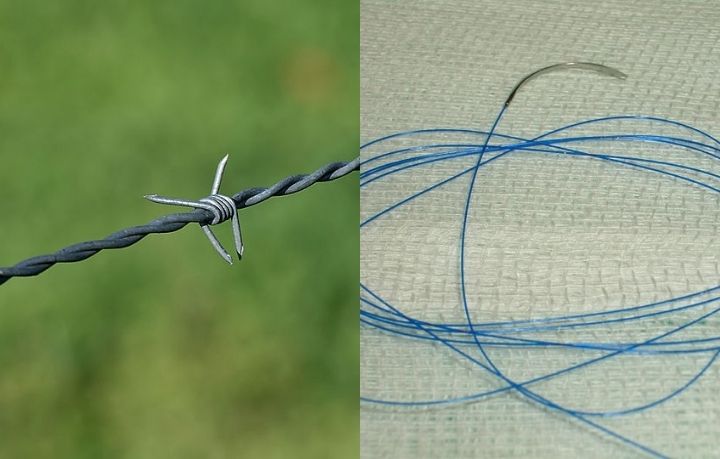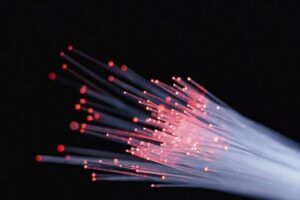Most wire fencing products are manufactured using either high tensile or low carbon wire. Low carbon wire is made from steel rods with a carbon content of approximately 0.10%. This type of wire is easier to work with and fairly forgiving. However, it stretches and can sag more than high tensile wire and as a result, has a lower breaking strain than high tensile wire.
High tensile wire is made with higher carbon content at approximately 0.28%. The increased carbon content significantly increases the wire’s strength and reduces its tendency to stretch, significantly reducing the need for tensioning and repair. This means that you are able to use a smaller diameter high tensile wire instead of the thicker low carbon wires.

High tensile wire can be installed using fewer posts than low carbon. If properly installed, high tensile wire will remain taut for years and will require much less maintenance. Low carbon wire begins to stretch and sag over time requiring regular maintenance.
Table of Contents
Information on the different wire coatings that are available.
Fence coatings are vitally important, they protect your fence from all that the elements can throw at it. Nobody wants a rusty fence and the shortened lifespan this brings and so a coating is essential. All sorts of environmental factors such as humidity, air pollution, salt, airborne dust, and abrasive chemicals can adversely affect your fencing. A coating creates a barrier between these factors and your fence, ensuring a strong, beautiful fence for decades to come.
There are several different types of coatings available across the industry, from high quality proprietary coatings like Bezinal from Bekaert, Xtralife alu/zinc coated wire from McVeigh Parker to more generally available standard and heavy galvanised line wire.
There are a lot of fencing products available. Which one is right for me?
There are several factors to consider when you are buying a fence.
Fence Function and Strength
Do the research to make sure you get this right first time. The variables to consider when buying a fence are: animal type, terrain, location, and livestock density. These combinations will lead to a different fence configuration, take time and, if necessary ask for advice from a trusted supplier.
Your supplier should be able to help with the equally important decision as to the design of the fabricated netting.

Traditionally hinge jointed netting has been used with low carbon line wire, however, this does tend to stretch over time and the hinge joints of the netting enable livestock to collapse the net and this also potentially pulls the verticals apart.
Hinge jointed net is fabricated in high tensile wire and will give the advantages of fewer posts and is certainly stronger than low carbon netting. This is normally a price sensitive product available in many basic patterns.
Stiff stay, one-piece vertical fabricated netting is by far the strongest netting you can buy, the stiff stay netting such as XFence has a one piece vertical wire from top to bottom held in place with a forged X knot. This type of knot is over 24% stronger than its nearest rival the Titelock knot. It creates an immensely strong fence that dissipates any pressure applied by livestock or humans.
Size does not always matter. Although smaller in diameter, lighter high-tensile fencing products actually exceed the breaking strain of heavier, larger diameter low carbon fencing products. Make sure you research the tensile strength of the fence that you need and ensure that the wire you are buying is up to the task. Look at suppliers’ spec sheets for more advice on which product is the right one for your project.
Fence Longevity
Nobody wants a rusty fence, aesthetically and practically, a bad idea. Make sure you use one of the many coated products now available, the better the quality of the coating on the product you choose, the longer the life expectancy of your fence. It is also important to remember that the ancillary products need to be protected from the elements as well. Choose galvanised accessories wherever possible too.
Fence Value
Always look for the best value over the lifetime of the fence. A very good option to consider is an all steel fence, stronger, longer-lasting, fully recyclable components, can be installed faster and easier, with minimal ground disturbance, and using less heavy machinery. You can lower maintenance costs dramatically and all these factors should lead to a lower cost per metre of fencing than more traditional options. A combination of the best coating Xtralife Alu/Zinc and X knot fabricated netting give you a long life, low maintenance, strong fence.
The key is to find a knowledgeable supplier that you can trust to give you all the help and advice you need from the planning stage right through to the installation and after-sales service.




